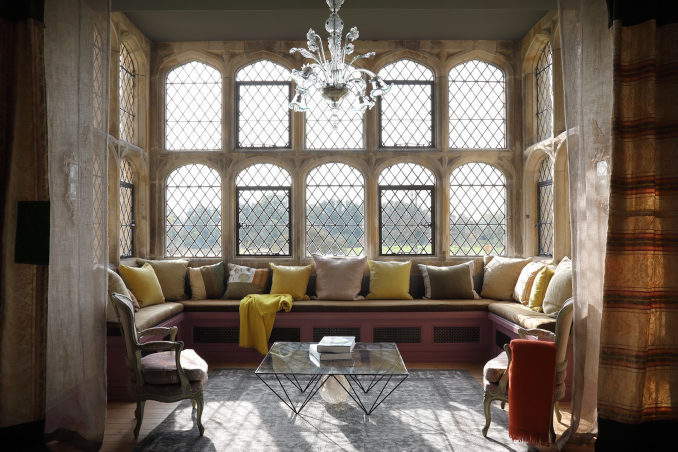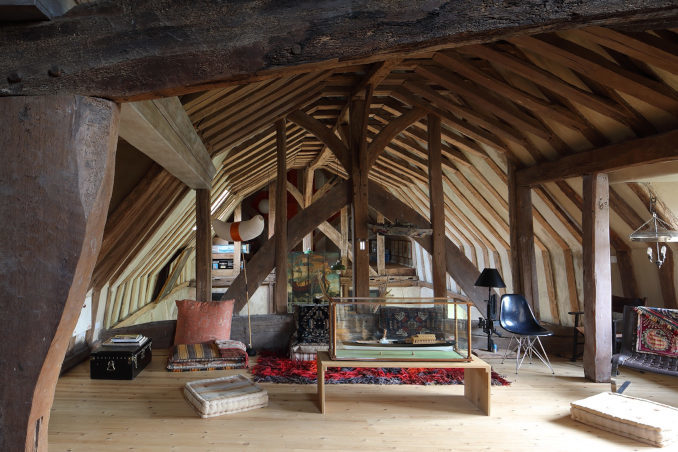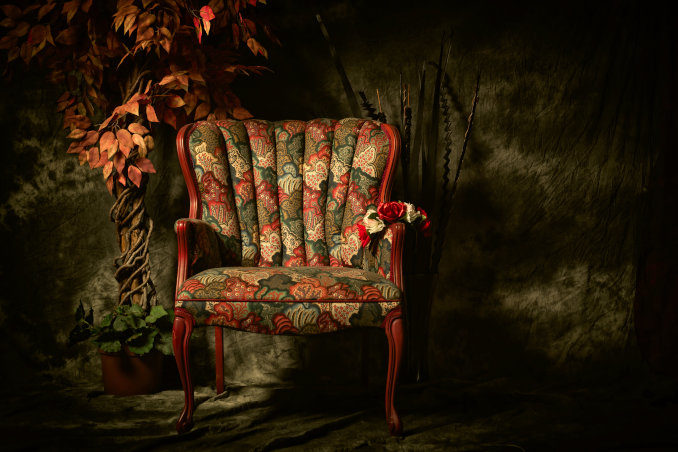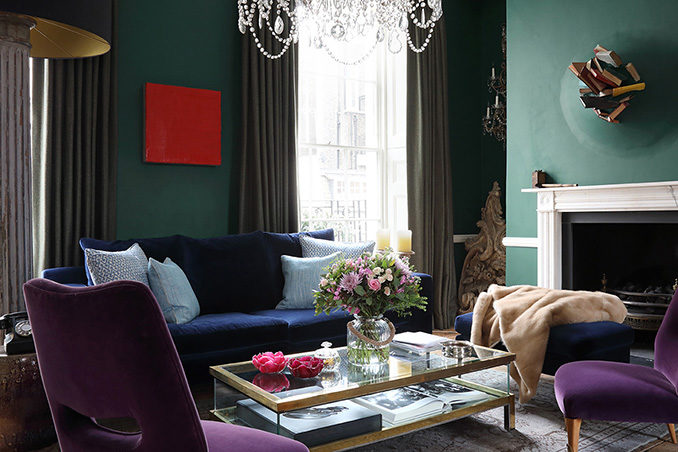What is a period property?
Typically referring to properties built before the First World War, you can identify a period property by two aspects. The time period in which it was built, and the inclusion of distinctive architectural styles that were prominent at that time. Clearly, now that we are well into the 21st Century, mid-20th Century movements like Art Deco are sometimes included as period. Not all period properties are English Heritage listed, but most that predate around 1840 tend to be. It is something that is worth being aware of if you are considering buying a period property, as graded listings carry certain responsibilities which will impact your design scope.

How are period properties classified?
It makes sense to research your period home to get a sense of authenticity when you come to interior design. So, the best place to start is the building’s period classification. This will help you to work out which are the strongest historical features of your home.
Tudor 1485 – 1603
As Renaissance ideas spread, architectural styles became more ostentatious. So we see lavish use of half timbers on building frontages, multiple rectangle windows, dormer windows and complicated roofs with gables.
Stuart 1603 – 1714
Buildings became more functional. As the prominence of wood made homes extremely susceptible to fire damage, (notably the Great Fire of London, which wiped out around 13,000 houses) homes were rebuilt with stone. Brickwork became prominent, with flat frontages and sash windows.
Georgian 1714-1837
Based on principles of symmetry and proportion, rooms were aesthetically scaled and included tall windows. Homes often feature a painted stucco facade, wrought-iron balconies, and elaborate embellishments atop windows and at the entrance.
Victorian 1837 – 1901
The past became an architectural influence, with an eclectic mix of gothic and Roman with added concepts from Asia. Roofs were steeply pitched and topped with finials, gables were ornate, and bay windows added depth to the facade. Grander homes would include octagonal or round towers.
Edwardian 1901 – 1910
Design mellowed and both structure and internal features were far more simple. Red brickwork and wooden framed porches are typical characteristics. A wide hallway and bright rooms make this a really attractive period for buyers now.

Restoring Features in Period Building Interior Design
We all know that foundations are important for buildings, and this is just as true for the original features of your period home. So when it comes to keeping interior design sympathetic to the period, it makes sense to put in the effort at the base. This celebrates period features alongside your own more personal design story.
Windows and Window treatments for period properties
I cannot emphasise enough how important windows are for the character of a property! You see them from the inside and the outside, they disperse natural light and their upkeep can really impact the overall look and comfort of your home. If your original timber window frames need some tender loving care, have them restored to their former glory. Then you will need to dress them. This does not always mean period style drapes and tassels – you should assess how your window reflects the rest of the room and tone your treatment from there, as we see in this piece in Real Homes titled: Window treatments for period homes: 20 new ideas.
Period Home Ceiling Features
From the low, cosy ceilings of Tudor cottages to the lofty heights of a Georgian terrace, the ceiling is a key feature of your period home. Maintain and restore any visible beams and highlight ceiling roses and cornices to keep things truly authentic. When you look up, you could be in the house when it was first built! Old House Online has some stunning examples of decorated ceilings in period properties.
Appropriate Lighting for a Period Home
There is certainly no need to go all candles and gas lamps to get it right! There are wonderfully authentic pendant styles available which set off ceiling details beautifully. However, these might not always be the most practical lighting solution. For example, if you want to juxtapose period and contemporary in your design scheme, sticking with the period can be limiting. Get inventive with shape and materials, and think about different levels of lighting to bring flexibility of mood. To read up on original fittings, take a look at Old House Online’s tips for how to choose lighting for period homes. For something a little more bold and personal, I will help with ideas!
Fireplaces in Period Properties
Restoring an original fireplace gives you more than just period authenticity. It will bring focus, depth, and character to the whole room. As a core feature, you can adorn and dress the fireplace with contemporary accents to create a bold statement without detracting from the period authenticity of the space. This home restoration blog describes a journey to restore an original fireplace so you can see what a huge impact it has.
Period Building Flooring
It is a real treat to uncover original period flooring! The Chelsea renovation project I mention above had the most stunning 200-year-old floorboards intact. Similarly, mosaic tiling, parquet, and slate are so very worth restoring to their former glory if they are still in situ. If not, it is worth reinstating it where you can. As a base, the floor of a room is the ultimate foundation for period authenticity, and can be complemented and contrasted to great effect. This history of period floors from The Victorian Floor Company gives a fascinating insight.
Period Wall Treatments
Remember that the aesthetic treatments of your period property walls will set the tone of the room. From panelling to wallpaper to colour schemes, walls are perhaps the most flexible and creative part of your period foundation. With a bit of thought here and there, your walls can harmoniously tie together authentic original features with more contemporary accessories and furniture. Homes and Garden magazine looks at several different wall treatment ideas.

Sourcing Period Furniture
No one expects a period home to be fully kitted out in period furniture – you are not the National Trust after all! However, a few signature pieces that are in keeping with the architectural period of your homework really well to tie past and present together. From auctions to home clearance to charity shops, you can find some really exciting pieces of vintage furniture for your period home. The investment you have to make here is in time. The right piece of furniture might prove elusive, but I am always certain that it is out there somewhere. This is why I make it my mission to find them!

Budgeting for Period Home Interior Design
A budget is always a ‘piece of string’ topic. When it comes down to it, outside forces will often dictate how much you have to spend. The most important thing, though, is to make sure you have your room foundation in place. If budget is tight, focus on restoring key original features well, and finding a striking authentic piece of furniture to focus the room. I think it is so important for a room to be as much about you as it is about its history. So I work really hard to balance the special and unusual with the classic and timeless, whatever the budget!


